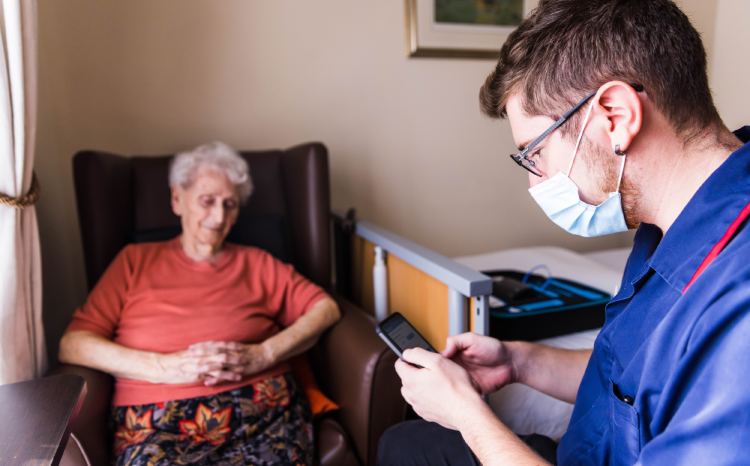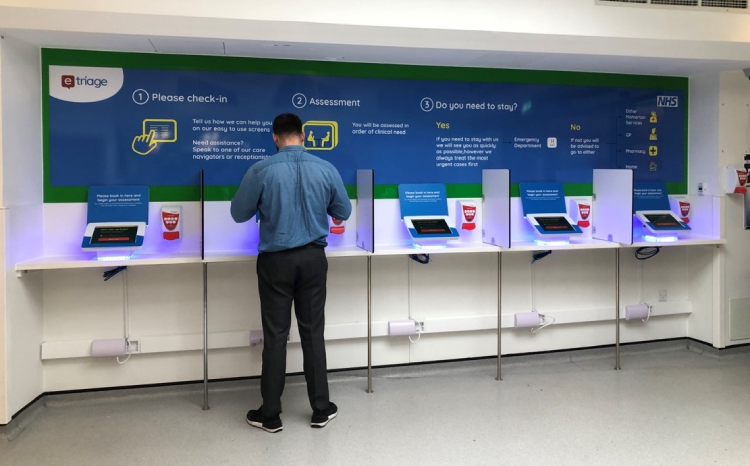Patient safety must be central to EPR design and rollout says report
- 5 August 2024

- Patient safety must be central to the design, development, and rollout of EPR systems, a report from Patient Safety Learning has stated
- The report highlights some examples from the NHS of EPR difficulties
- It also includes ten principles for safe EPR system implementation
Patient safety must be central to the design, development, and rollout of electronic patient record (EPR) systems, a report from Patient Safety Learning has stated.
The report, published on 31 July 2024, makes the case that patient safety can, and must, be firmly at the heart of the design, development and rollout of EPRs. It sets out the patient safety risks associated with choosing and introducing new EPR systems.
Patient Safety Learning highlights some examples from the NHS of EPR difficulties, including at Ashford and St Peter’s Hospitals NHS Foundation Trust and Royal Surrey NHS Foundation Trust.
“Initial reports in August 2022 highlighted the impact of implementing a new EPR system, Surrey Safe Care, at Ashford and St Peter’s. Reports to the Trust’s Board raised concerns about the risk of delays in the project causing harm to cancer patients,” the report states.
“Just over a year later, further concerns were raised about the implementation of this EPR at another trust, Royal Surrey. A board paper stated that there had been 927 safety reports related to the introduction of the system.
“This included one case where a patient died and 30 others where they suffered harm. Subsequently, concerns about levels of staff training on the EPR system prior to its introduction at both trusts have been highlighted.”
The report also mentions the BBC investigation which outlined concerns about deaths and serious cases of harm associated with EPR system failures. Responses to a freedom of information request sent by BBC News to acute trusts in England found 126 instances of serious harm linked to IT issues across 31 trusts, including three patient deaths.
As a result of these instances of serious patient harm, Patient Safety Learning believes that “there needs to be a transformation in the health and care system’s approach to patient safety”.
The report highlights how patient safety should be embedded in each stage of introducing EPR systems:
- Development – Patient safety must be at the heart of the initial procurement, design, configuration, and development of EPR systems, with a focus on interoperability, usability, and design for safety.
- Rollout – – As EPRs are introduced into organisations, it is vital that the appropriate training and support is provided to staff. There needs to be sufficient usability testing, time allowed for amendments being made to reflect the most efficient and effective processes, and a greater role for EPR manufacturers in providing training and support to staff.
- Implementation – Once an EPR is in place, monitoring how it is operating in practice and learning and acting on any risk assessments, incidents, or near misses that take place relating to this.
“In each of these stages there should be clear steps to involve and engage both patients and frontline staff as part of this process,” the report adds.
Commenting on the report, Patient Safety Learning chief executive Helen Hughes said: “EPR systems have significant potential to improve patient care and treatment.
“However, we are increasingly seeing cases where poor implementation of these new systems results in direct and indirect harm to patients. If we are to fully realise their benefits, patient safety must be at the heart of their design, development, and rollout.
“To ensure the safety of EPR systems, it is vital that patient safety incidents associated with them are reported and acted upon. We need more transparency in reporting and sharing knowledge, of both errors and examples of good practice.
“We hope that this report can kick off an informed and transparent debate about these issues, leading to action that supports the safer implementation of EPR systems and reduces avoidable harm.”
The issue of patient safety incidents relating to the use of online consultation tools by GPs being underreported was highlighted in an investigation by the Health Services Safety Investigations Body (HSSIB).
The report concludes with ten principles for safe EPR system implementation, which can be found on pages 20 and 21 of the report here.




